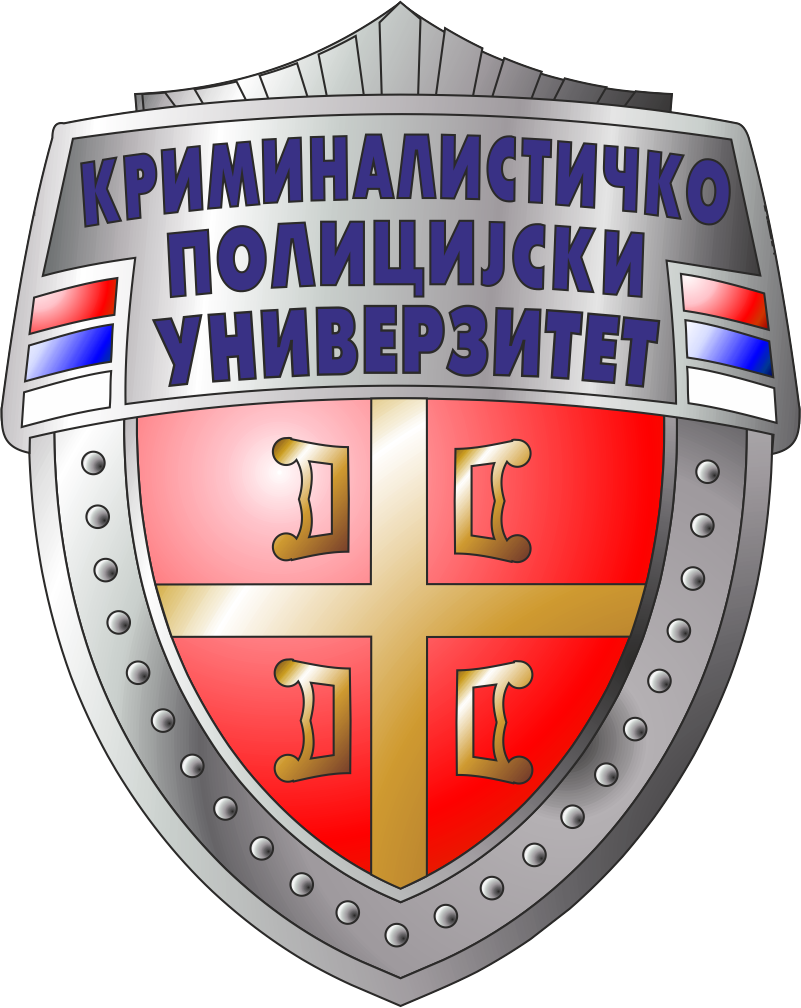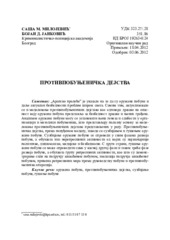Prikaz osnovnih podataka o dokumentu
Противпобуњеничка дејства
Counter-rebellion actions
| dc.creator | Милојевић, Саша М. | |
| dc.creator | Јанковић, Бојан Д. | |
| dc.date.accessioned | 2023-08-18T12:23:14Z | |
| dc.date.available | 2023-08-18T12:23:14Z | |
| dc.date.issued | 2012 | |
| dc.identifier.issn | 1820-4589 | |
| dc.identifier.uri | http://jakov.kpu.edu.rs/handle/123456789/1471 | |
| dc.description.abstract | „Арапско пролеће” је указало на то да су оружане побуне и даље актуелан безбедносни проблем широм света. Самим тим, актуелизовало се и моделовање противпобуњеничких дејстава као одговора државе на опасност коју оружана побуна представља за безбедност државе и њених грађана. Анализом оружане побуне могу се установити њена генеза и слабости у организацији и методици побуњеника, што представљају полазну основу за моделовање противпобуњеничких дејстава представљених у раду. Противпобуњеничка дејства, према понуђеном моделу, изводе се сузбијањем и гушењем оружане побуне. Сузбијање оружане побуне се спроводи у свим фазама развоја побуне, а обухвата низ нерепресивних активности од којих су најзначајније политичке, дипломатске, медијске и безбедносне. С друге стране, гушење оружане побуне се може спроводити само у касној другој фази и током треће фазе развоја побуне, а обухвата групу репресивних активности, као што су демонстрирање силе на подручју захваћеном побуном, изолација подручја захваћеног побуном, примена репресивних мера према руководству побуне и противпобуњеничка операција. | sr |
| dc.description.abstract | An armed rebellion is a political struggle combined with mass armed violence, led by a social group gathered around common interests against the current government with the aim of changing the government or obtaining some concessions from it, without any attempt to achieve the same by legal (institutional) means. Rebels take various forms of action to achieve their goals. Independently or in combination, forms of action have their own evolution, going from the organization of the movement to overthrowing the legal government through three stages. Counter-rebellious actions can be defined as a set of measures, procedures, and activities undertaken by the legal government of the country, with the forces available, on its own territory, against internal armed rebellion. They are performed by suppressing, and subduing the armed rebellion. Actions of suppressing the armed rebellion are carried out in all stages of the rebellion development, while the activities of subduing the rebellion are carried out in the late second and during the third phase of the rebellion development. Suppression of an armed rebellion is a set of countermeasures of a country that can, in an efficient manner, partially or completely, eliminate or reduce reasons for an armed rebellion occurrence, or minimize its effect. These measures are directed primarily towards the rebellious population in order to gain their trust and increase loyalty to the state. Suppression of armed rebellion is carried out with a series of activities, the most significant of which are political, diplomatic, media and security. Political activities for the suppression of armed rebellion may be divided into three groups: 1) measures for restoring degraded political-legal and social system in the area where there has been an outbreak of the rebellion (offensive measures); 2) measures to stop the migration of the loyal population from the area of the rebellion outbreak (defensive measures), and 3) other policy measures (neutral measures). Diplomatic activities are a set of measures and activities of the state, primarily on foreign policy, which affect the internationally important factors that have influence on the improvement or deterioration of the country’s position in the global (world) geopolitical or geostrategic plan. The goal of these activities is to gain support of internationally important centres of power to run counter-rebellion actions or direct the political (diplomatic) activities of these centres against the objectives and modus operandi of the rebels. Several goals are accomplished by media activities: 1) creation of a positive image in the international community about the state that has a problem with the rebellion; 2) breaking the ideological homogenization of the rebels; 3) discrediting the political and military leadership of the rebellion, and 4) stopping the migration of loyal population from the areas affected by the rebellion and improving the overall demographic picture of the area. Security activities within the execution of counter-rebellion actions include suppression of specific criminal acts committed for political motives, that threaten the internal or external security of the country, as well as all criminal activities that are carried out for ideological or political reasons within or outside the country. The counter-rebellion actions are performed in order to detect and eliminate the secessionist occurrences endangering the security and territorial integrity of the country. The main tasks performed to achieve such a defined objective are weakening the rebel movement, breaking the ideological homogenization of rebels and discrediting the political and military leadership of the rebellion. Subduing the armed rebellion is the use of police forces that break off the rebels, break down their resistance by force, take repressive measures against participants in the rebellion, and take repressive measures against political and military leadership of the rebellion. However, in the long run, subduing the rebellion cannot solve the developed crisis, but only provide time for application of measures for suppressing the rebellion. Subduing the armed rebellions is carried out by a series of police actions of which the most significant are the demonstration of force; isolation of the affected areas, use of repressive measures against the leadership of the rebellion and execution of counter-rebellion operations. Demonstrating the power is intended to intimidate rebels and the population that supports them, paralyzing the desire for rebellion, enters disbelief, discouragement, defeatism and thus compels them to make concessions or abandonment of the idea that their goals can be achieved with armed violence against the state and its institutions. Isolation of the affected area is performed by operations and procedures that cut off rebel forces in a particular area from their background (if possible, from the population that supports them) and the rest of the rebel forces. The application of repressive measures against the leadership of the rebellion is performed by deprivation of liberty of persons who are the political and military organizers and leaders of the rebellion. A measure carried out within the subduing the armed rebellion can only be effective as a part of a broader planned action that will use the results of the confusion that arises among the rebels after the apprehension of leaders. Counter-rebellion actions. The concept of a counter-rebellion action could look like this: military forces ”hermetically” close the frontier of neuralgic area in the width of one to three kilometers; combined police and army forces search the terrain according to principle find – arrest or neutralize (contact); a part of army units (task forces) conduct training activities (mobile camps) near the regions of the search; police forces (space and maneuver) control communication with the permanent security checkpoints, and are ready for blocking the region, setting up ambushes and searching the area; fast-moving army and police units (intervention forces) are placed in certain regions in constant readiness for action (by invitation); a unique command that commands through the commands of sectors consolidates the command over forces. | sr |
| dc.language.iso | sr | sr |
| dc.publisher | Нови Сад : Култура – Полис | sr |
| dc.rights | openAccess | sr |
| dc.rights.uri | https://creativecommons.org/licenses/by/4.0/ | |
| dc.source | Култура полиса / Culture of polis | sr |
| dc.subject | oružana pobuna | sr |
| dc.subject | protivpobunjenička dejstva | sr |
| dc.subject | gušenje pobune | sr |
| dc.subject | suzbijanje pobune | sr |
| dc.subject | armed rebellion | sr |
| dc.subject | counter-rebellion actions | sr |
| dc.subject | suppressing the rebellion | sr |
| dc.subject | subduing the rebellion | sr |
| dc.title | Противпобуњеничка дејства | sr |
| dc.title | Counter-rebellion actions | sr |
| dc.type | article | sr |
| dc.rights.license | BY | sr |
| dc.citation.volume | 9 | |
| dc.citation.issue | 1 | |
| dc.citation.spage | 343 | |
| dc.citation.epage | 364 | |
| dc.identifier.rcub | https://hdl.handle.net/21.15107/rcub_jakov_1471 | |
| dc.identifier.fulltext | http://jakov.kpu.edu.rs/bitstream/id/6272/bitstream_6272.pdf | |
| dc.type.version | publishedVersion | sr |


